Kosovo’s cultural heritage is deeply woven into its landscape, preserved through a network of museums and monuments that captivate visitors. From the National Museum‘s trove of archaeological treasures to the Ethnographic Museum‘s showcase of traditional crafts, these institutions offer a window into the region’s storied past. Iconic memorials like the Newborn Monument and the Monument of the Albanian Alphabet stand as proud testaments to Kosovo’s struggle for independence and linguistic identity. Exploring these sites not only illuminates Kosovo’s resilience but also invites deeper engagement with its rich cultural tapestry. What else might these venues reveal about this intriguing Balkan nation?
Key Points
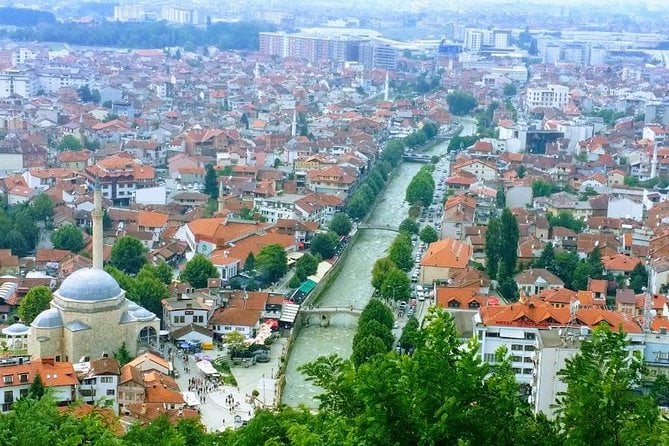
- Kosovo’s cultural heritage reflects a blend of its past and present, with iconic landmarks like the Mother Teresa Cathedral and Skanderbeg Square in Pristina.
- The country’s museums, such as the National Museum of Kosovo and Ethnographic Museum, showcase the nation’s archaeological artifacts, traditional crafts, and historical eras.
- Monuments like the Monument of the Albanian Alphabet and Newborn Monument honor Kosovo’s linguistic heritage and independence, providing insights into its complex history and struggles.
- Kosovo’s diverse communities, including Albanian, Serb, Bosniak, and Roma, contribute to its vibrant cultural landscape, with artisan workshops, local festivals, and warm hospitality.
- Architectural wonders such as the Prizren Fortress, Banjska Monastery, and Et’hem Beg Mosque reflect Kosovo’s rich history and identity, which are actively preserved through government and international efforts.
Pristina’s Iconic Landmarks
Pristina, Kosovo’s capital, boasts a rich tapestry of iconic landmarks that captivate visitors.
The imposing Mother Teresa Cathedral, with its striking white marble facade, stands as a testament to the city’s religious heritage.
The lively Skanderbeg Square, named after the national hero, serves as the vibrant heart of the city, bustling with cultural events and local life.
The National Library of Kosovo, known for its avant-garde architectural design, houses a vast collection of literature and manuscripts.
These landmarks seamlessly blend Kosovo’s past and present, offering a glimpse into the country’s enduring cultural identity.
You can also read our reviews of more tours and experiences in Pristina.
Kosovo’s Museum Treasures
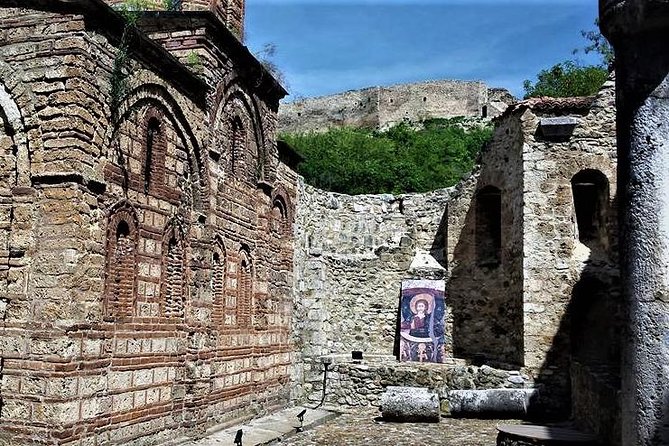
Beyond the iconic landmarks of Pristina, Kosovo boasts an impressive array of museums that showcase the country’s rich cultural heritage. Notable among them:
-
The National Museum of Kosovo – home to a vast collection of archaeological artifacts, medieval art, and ethnographic displays.
-
The Ethnographic Museum – offering insights into Kosovo’s traditional way of life, with exhibits on clothing, crafts, and daily rituals.
-
The Kosovo Museum – dedicated to the history and culture of the region, featuring exhibits on the Ottoman, Yugoslav, and independence eras.
-
The Museum of Natural History – showcasing the diverse flora and fauna of Kosovo, as well as geological formations and fossils.
These museums provide visitors with a deeper understanding and appreciation of Kosovo’s centuries-old cultural legacy.
Monuments Honoring History
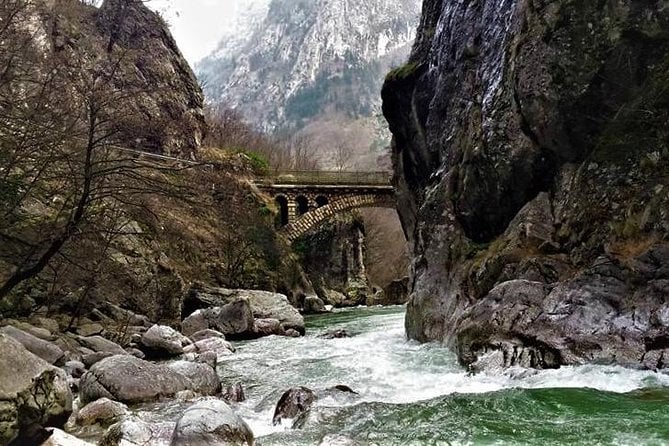
Kosovo’s rich history is memorialized through an array of captivating monuments found throughout the country. From the iconic statues of notable figures to the awe-inspiring memorials, these monuments honor the nation’s past and its resilient people.
Visitors can explore the towering Monument of the Albanian Alphabet in Pristina, a tribute to the Albanians’ linguistic heritage. The Newborn Monument in the capital city’s central square serves as a powerful symbol of Kosovo’s independence.
These sites provide a window into Kosovo’s complex history, allowing travelers to gain a deeper understanding of the country’s cultural identity and the struggles it has overcome.
Exploring Cultural Diversity
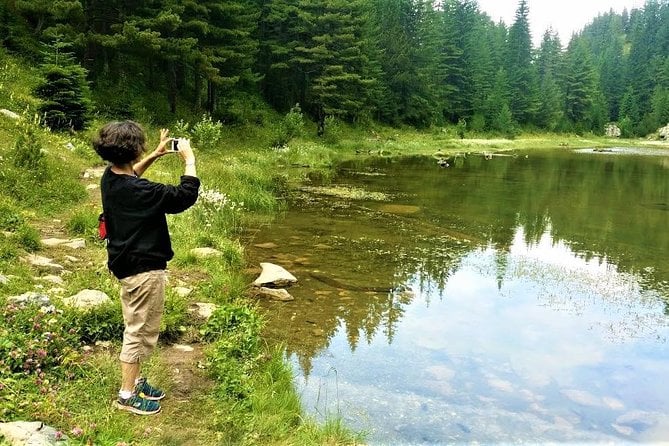
Beyond the monuments, Kosovo’s cultural heritage is defined by its diverse communities and their rich traditions.
Visitors can enjoy the multicultural fabric of the country by:
-
Exploring the vibrant neighborhoods of Pristina, where Albanian, Serb, Bosniak, and Roma communities coexist.
-
Visiting traditional artisan workshops to witness the production of handcrafted textiles, metalwork, and pottery.
-
Attending local festivals that celebrate music, dance, and cuisine from Kosovo’s diverse ethnic groups.
-
Connecting with the warm hospitality of Kosovars, who take pride in sharing their customs and welcoming guests into their homes.
This cultural diversity is a testament to Kosovo’s resilience and the richness of its living heritage.
Architectural Wonders of Kosovo
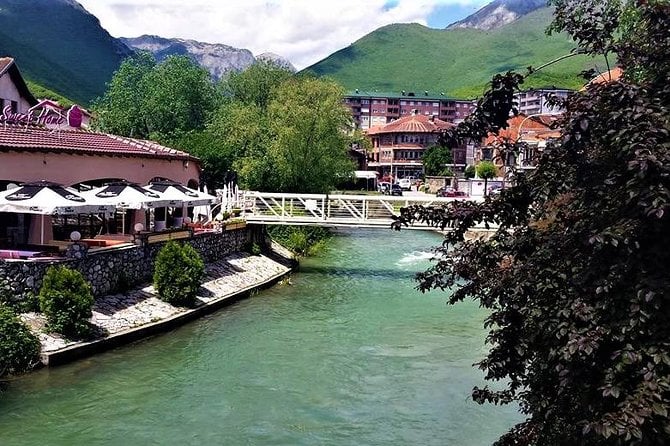
Pristina, the capital of Kosovo, is home to a remarkable collection of architectural treasures that captivate visitors.
The iconic Prizren Fortress, dating back to the 11th century, stands atop a hill overlooking the city, offering stunning panoramic views.
The Banjska Monastery, a Serbian Orthodox monastery, features intricate Byzantine-style frescoes and ornate architecture.
Nearby, the Gračanica Monastery, a UNESCO World Heritage Site, is renowned for its well-preserved medieval Serbian architecture.
In the heart of Pristina, the 19th-century Et’hem Beg Mosque with its ornate decorations and minaret is a striking example of Ottoman influence.
These architectural wonders provide a glimpse into Kosovo’s rich cultural heritage and history.
Preserving Kosovo’s Heritage
Preserving Kosovo’s rich cultural heritage is a paramount concern for the nation. The government has taken several initiatives to safeguard its historical sites and artifacts:
-
Establishing the Kosovo Institute for the Protection of Monuments to oversee restoration and conservation efforts.
-
Implementing strict regulations to prevent the illicit trade and export of cultural property.
-
Collaborating with international organizations to secure funding and expertise for preservation projects.
-
Promoting public awareness and community involvement in heritage stewardship through educational programs and cultural events.
These measures underscore Kosovo’s commitment to honoring its past and ensuring its vibrant cultural legacy endures for future generations.
Meaningful Memorials and Symbols
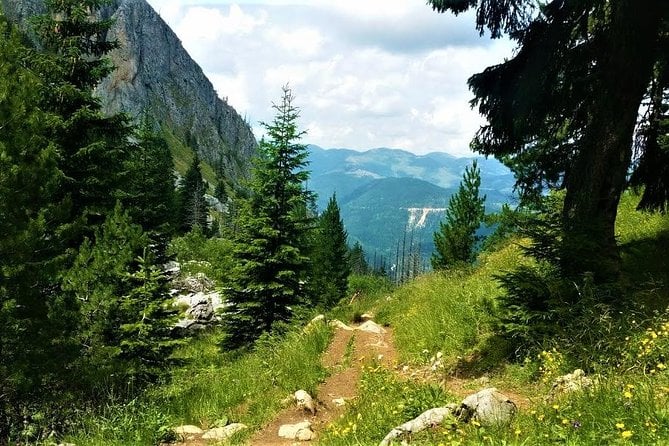
One powerful example is the Kosovo War Memorial, a striking monument honoring those who lost their lives during the 1998-1999 conflict. This poignant sculpture features a lone soldier, representing the immense sacrifices made by the Kosovo people.
Another symbol with profound meaning is the Albanian eagle, a national emblem appearing on Kosovo’s flag. This iconic bird reflects the country’s heritage and aspirations for independence.
These memorials and symbols serve as tangible reminders of Kosovo’s tumultuous past and its resilient spirit, connecting the nation to its history in a deeply meaningful way.
Experiencing Kosovo’s Cultural Richness
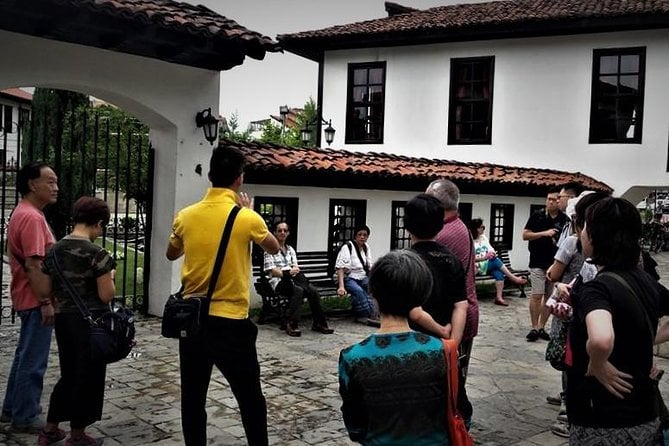
Beyond the poignant memorials and symbols that capture Kosovo’s turbulent history, the country offers a rich tapestry of cultural experiences for visitors.
Key highlights include:
-
Exploring the vibrant capital city of Pristina, with its bustling markets, lively cafes, and striking Ottoman-era architecture.
-
Visiting the historic mosques and churches that dot the landscape, showcasing the region’s diverse religious heritage.
-
Discovering the rural villages and traditional way of life, where artisanal crafts and time-honored culinary traditions thrive.
-
Immersing oneself in Kosovo’s dynamic arts scene, from contemporary galleries to traditional folk music performances.
Embracing Kosovo’s cultural richness allows travelers to gain a deeper understanding of this resilient and captivating country.
Frequently Asked Questions
Is There a Dress Code for the Tour?
There is no specific dress code for the tour. Visitors should dress comfortably and wear appropriate clothing for walking and visiting cultural sites. Casual or smart casual attire is recommended.
Can I Take Photographs During the Tour?
Yes, you can take photographs during the tour. The tour allows participants to capture the sights and cultural heritage they’ll explore. Just be mindful of any restrictions that may apply at certain sites.
Are There Any Dietary Restrictions or Options?
The tour offers flexible dining options to accommodate various dietary needs. Guests can discuss any dietary restrictions or preferences with the guide when booking or prior to the tour’s start to ensure an enjoyable culinary experience.
What Is the Average Group Size for the Tour?
The average group size for the tour is flexible, with the pricing varying based on the number of travelers. Group sizes are customizable to accommodate your party’s needs.
Can I Extend the Tour Duration if Needed?
Yes, the tour duration can be extended if needed. The tour provider is flexible and willing to accommodate requests to extend the tour length to suit the traveler’s needs and schedule.
The Sum Up
Kosovo’s cultural heritage is remarkably preserved in its museums and monuments. From the National Museum‘s archaeological artifacts to the Newborn Monument‘s symbolic meaning, these sites offer visitors an enlightening glimpse into the region’s history and identity. By exploring Kosovo’s diverse cultural treasures, travelers can truly experience the resilience and richness that define this remarkable country.
More Tour Reviews in Pristina
Not for you? Here's more things to do in Pristina we have recnetly reviewed
- 2 Best Private Car With Driver Services In Pristina
- Cave Trekking-Kosovo
- Private Transfer Prishtina to Tirana
- Experience 3 Beautiful Monasteries (Unesco) in Kosovo
- Hiking in Hajla Peak 2403m
- Explore the Hidden Gems of Kosovo
- 13 Best Tours In Pristina
- Skopje and Ohrid Two Day Tour From Pristina
- Mountain Biking Tour
- Explore the Youngest Country of Europe: Kosovo Tour in Seven Days
- Ohrid One Day Trip From Pristina
